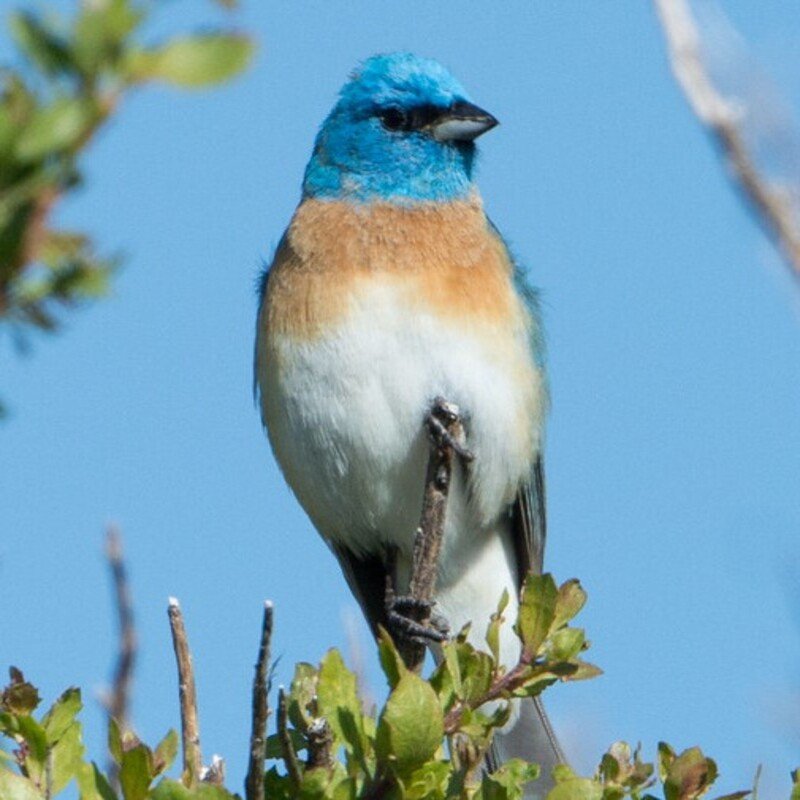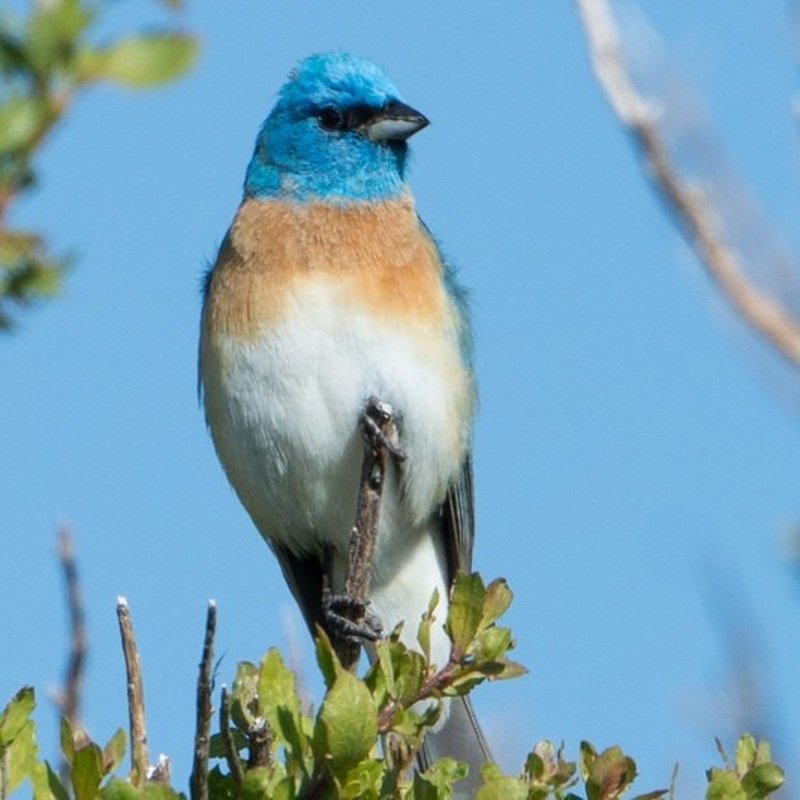The Passerina amoena or commonly called lazuli bunting is a North American songbird in the family of Cardinalidae. These birds get their name from the bright blue hood of the male, resembling the gemstone lapis lazuli.
Both species with the Indigo bunting, its resembles, hybridize where their ranges overlap. These male species can also sing. It can sing through the day from a perch high above the ground.
Quick Overview: Passerina Amoena – Lazuli Bunting
Body size: Around 5.25-5.75 in (13-15 cm) in length and weighed 23 g (0.8 oz)
Main colors: Blue, White, Brown, Gray
Range: Throughout the United States
Migratory Bird: Yes
Best time of the year to see in the U.S.: June, July, August, September
Conservation Status: Least Concern
Lazuli Bunting Description
The male has a bright blue head and back (lighter than the indigo bunting), white wing bars, a light rusty breast, and a white belly. However, its smaller size, wing bars, and short conical bunting bill distinguish it from eastern and western bluebirds. The female is brown, grayer above and warmer underneath, and has two thin pale wing bars.

Size
These medium-sized birds are 5.25-5.75 in (13-15 cm) in length and weighed 23 g (0.8 oz). Its wingspan could range around 8-9 in (20-23 cm).
Feeding
Lazuli buntings eat fruit, granivores, and insects. Lazuli buntings eat seeds from grasses like Stipa, wild oats, and canary grass (Phalaris canariensis). Lazuli buntings have been observed eating Motia seeds. Lazuli buntings eat arthropods like grasshoppers, ants, bees, beetles, caterpillars, and other bugs.
Habitat
Lazuli buntings inhabit riparian, open woodland and shrubby desert habitats. During the breeding season, they are found in suburban gardens and fencerows (along with agricultural fields). Recent burns also boost their numbers.
Behavior
Lazuli buntings mainly move by hopping. Long-distance flights are made with rapid wing beats and a straight flight pattern. Males look for food after migrating to breeding areas. They are usually non-vocal now. They start fighting and yelling at each other after a few days. This is a male bird claiming territory.
Passerina Amoena Scientific Classification
- Kingdom: Animalia
- Phylum: Arthropoda
- Subphylum: Chelicerata
- Class: Aves
- Order: Passeriformes
- Family: Cardinalidae
- Genus: Passerina
- Species: Passerina amoena
Best time of the year to see
The best time of the year you could these birds in the United States is during the summer season (June to September).
Distribution of the Lazuli Bunting in the USA
This bird is native to the Marshall Islands, Canada, Mexico, Russia, and the United States. It is believed to be extinct in Japan. Norfolk Island and New Zealand have Lazuli Buntings.
The Lazuli Bunting can be found in the following states in the United States – Alabama, Alaska, Arizona, Arkansas, California, Colorado, Connecticut, Delaware, Florida, Georgia, Hawaii, Idaho, Illinois, Indiana, Iowa, Kansas, Kentucky, Louisiana, Maine, Maryland, Massachusetts, Michigan, Minnesota, Mississippi, Missouri, Montana, Nebraska, Nevada, New Hampshire, New Jersey, New Mexico, New York, North Carolina, North Dakota, Ohio, Oklahoma, Oregon, Pennsylvania, Rhode Island, South Carolina, South Dakota, Tennessee, Texas, Utah, Vermont, Virginia, Washington, West Virginia, Wisconsin and Wyoming.

